MSRP (*Base Edition)
Hybrid PHEV | MPV | 90KM
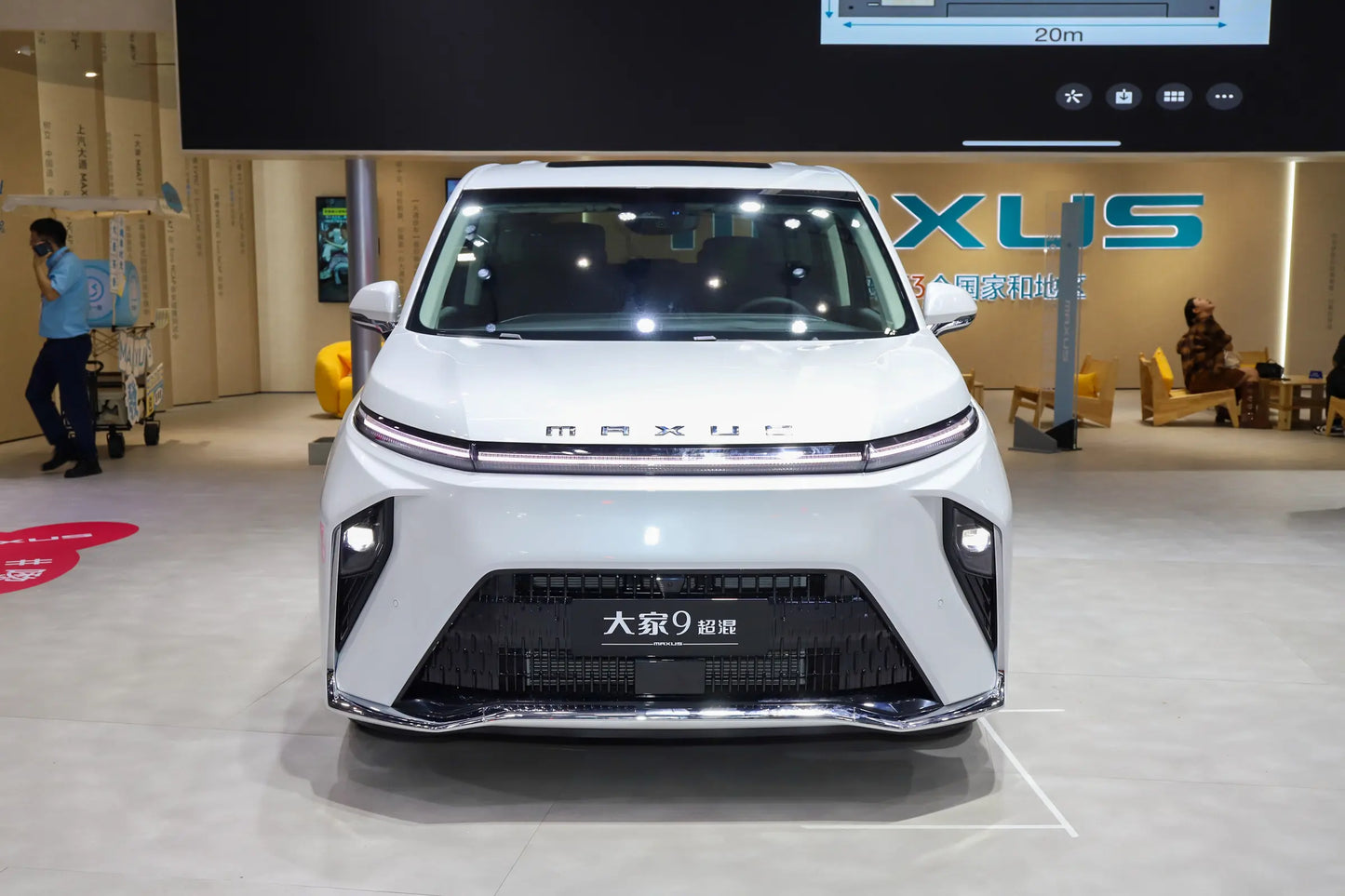
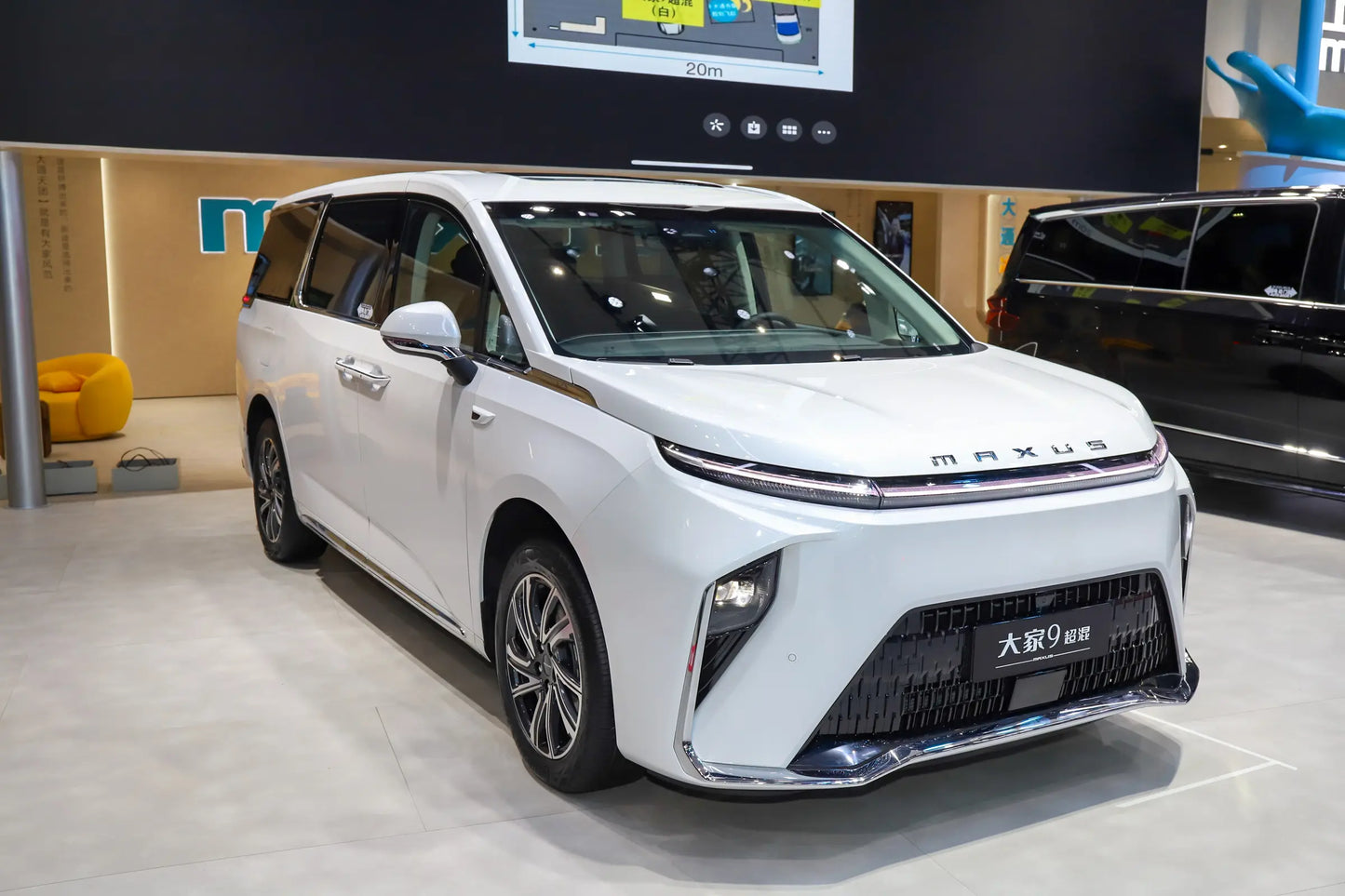
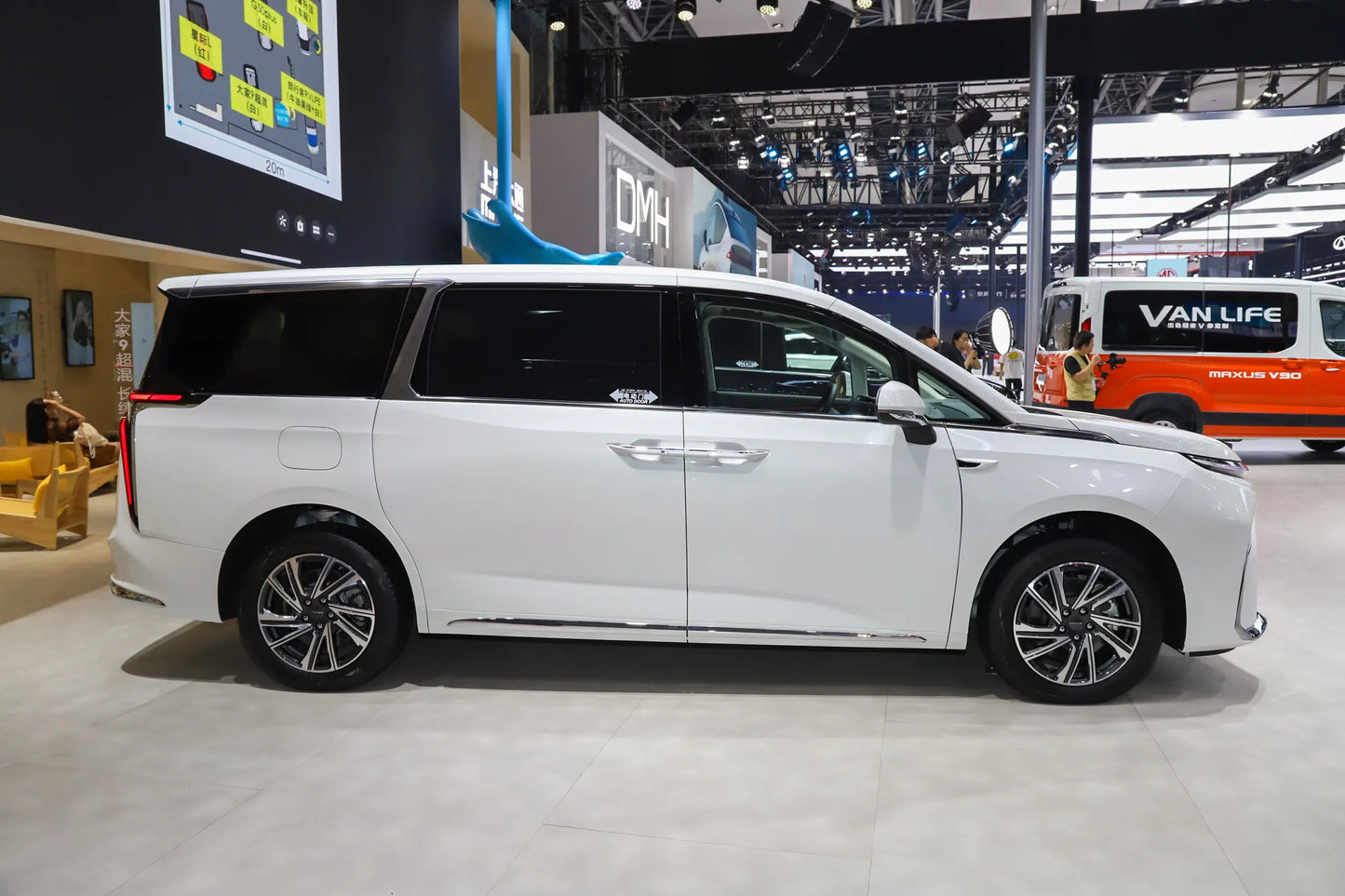
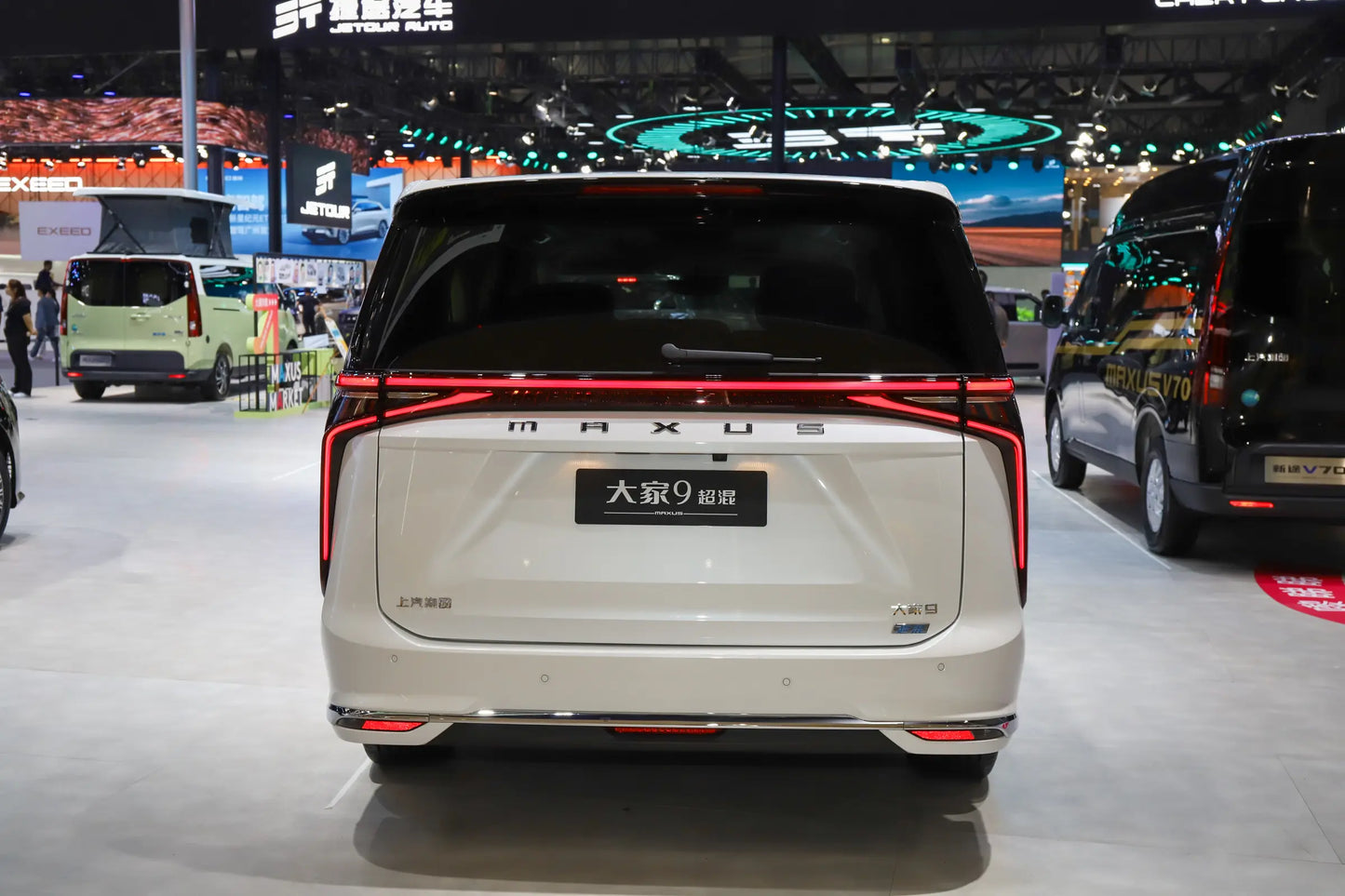
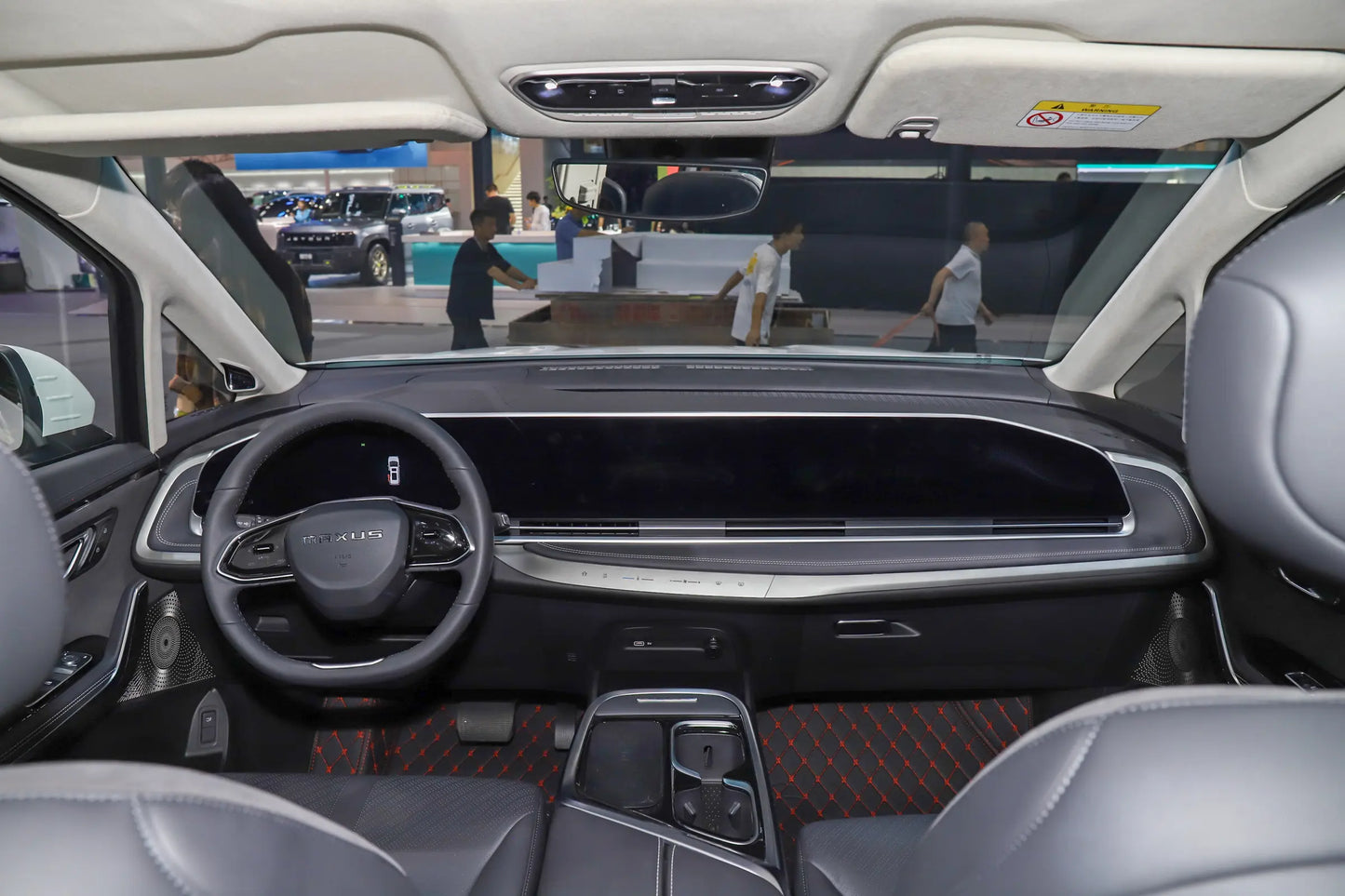
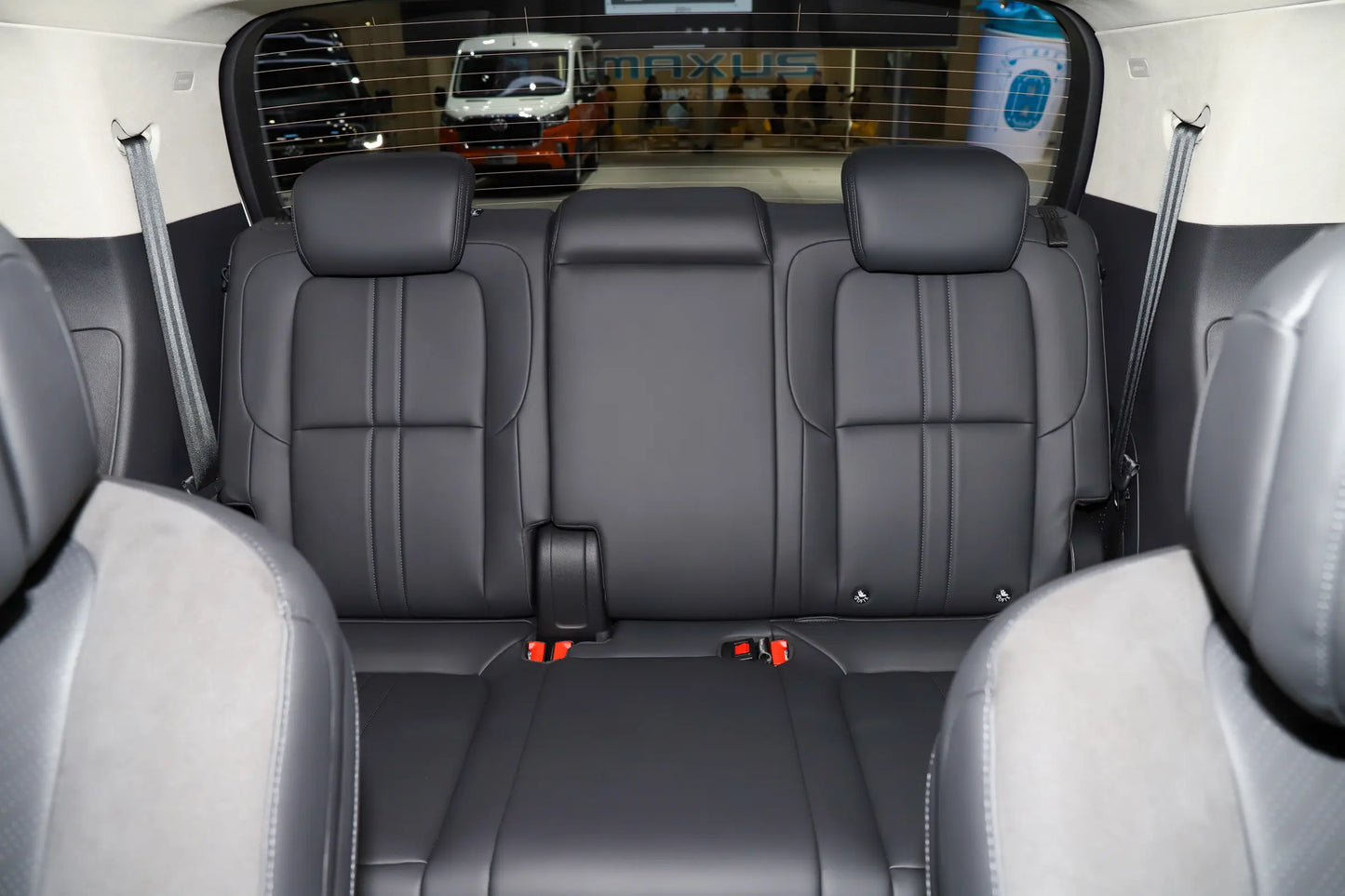
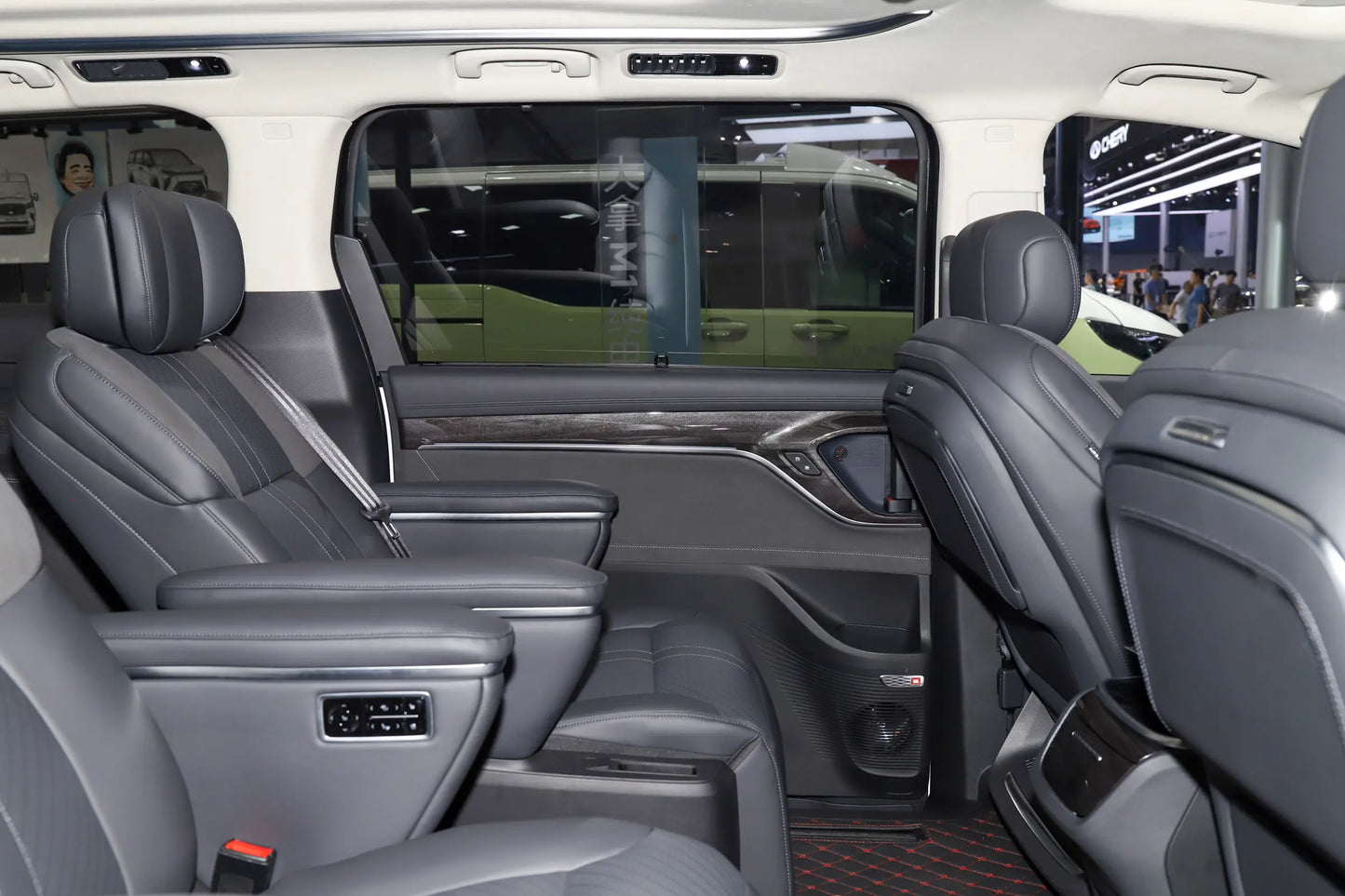
$37,036 USD
-
BrandSAIC Maxus
-
Vechile ClassMPV
-
Energy TypeHybrid PHEV
-
Pure Electric Range(KM)90
-
Curb Weight (kg)2420
-
Battery TypeLithium Iron Phosphate Battery
-
Total Power of Motor (KW)176
-
Maximum Power(KW)110
-
Total Torque of Motor(N・m)390
-
Maximum Torque(N・m)235
-
Length x Width x Height(mm)5270x2000x1848
-
Official 0-100km/h Acceleration Time(s)/
-
Power Consumption(kWh/100km)18.7
-
Equivalent Fuel Consumption (Electricity)(L/100km)2.11
-
Battery Capacity(kWh)24.7
-
MaximumSpeed(km/h)180
-
Motor LayoutFront-mounted
-
Transmission1-speed hybrid-dedicated transmission
-
Displacement(L)1.5
-
Intake TypeTurbocharging
-
IDph09130
Panoramic Interiors
Video Manual
Authentic on-site shots for an immersive vehicle detail experience
Real Customer Reviews
Source: DCAR
Review A
I originally switched from a fuel-powered car to a new energy vehicle, and this car offers great value for money. I usually drive in pure electric mode in the city and switch to hybrid mode on highways, which is very economical. I typically charge it every three days, taking about 6 hours each time at a cost of 20 yuan, with a range of 160-180 kilometers—truly cost-effective. Currently, the car lacks intelligent driving features, which I find a bit disappointing, but it does have VR real-scene navigation, making it quite convenient in practical use. Adaptive cruise control is very handy on highways, easily relieving leg fatigue, and you can set the following distance to 1-3 car lengths; the infotainment system's functionality is average, and it can't be manually turned off—it starts automatically when you enter and only shuts down when you lock the car; the third-party app selection is limited, and I hope more popular apps will be added in the future. I suggest adding intelligent driving and automatic parking in the next upgrade. The center console features three large screens with noticeable black bezels, and the side screens seem somewhat redundant—they would be more useful as electronic rearview mirror displays. The interior craftsmanship is carefully executed with great attention to detail, and the suede upholstery gives off a premium feel. The folding table in the second row is highly practical, and the cabin's sound insulation is excellent. However, the suspension can feel a bit stiff at times. I use the car in Beijing, primarily driving in pure electric mode on a daily basis. In the summer, I almost always turn on the air conditioning as soon as I get in, since I picked up the car around July when Beijing is extremely hot. The vehicle has a pure electric range of 225 kilometers. With the air conditioning set to the lowest temperature, the average energy consumption for daily trips with my family of three ranges from 23-35 kWh, translating to a range of 160-170 kilometers. I typically activate the air conditioning, navigation, and music upon entering the car, or the front passenger watches Bilibili. In winter, I personally feel the fully charged range is similar to that in summer. At home, I can only charge at 7kW, which takes about 6 hours for slow charging, while fast charging outside takes approximately an hour and is compatible with the 400V platform. The front and second-row spaces are very spacious, equipped with massage, ventilation, and heating functions. The front seats can fully recline, with the only drawback being the absence of leg rests. There's a center console storage box between the driver and front passenger with a hollow bottom for storage, and a thoughtful small detail is the built-in lighting. The second row features zero-gravity luxury first-class seats, making rides extremely comfortable, complete with massage, ventilation, and heating. The third-row seats are adjustable forward and backward; when pushed all the way back, cargo space becomes very limited—only accommodating two 20-inch carry-on suitcases and some small items—but the seating experience is excellent due to the generous cushion thickness. Currently, the infotainment system does not support popular apps like iQIYI, Tencent Video, Youku, or QQ Music; only Bilibili can be installed for video streaming. None of the models in this series offer automatic parking functionality, and it's unclear whether this could be addressed via OTA updates. Additionally, when the fuel gauge indicates near-empty, it only displays a "low fuel" warning without showing the remaining range. I hope these features can be added in future system OTA updates. It would be better if the price were more discounted, and I also hope SAIC Maxus organizes more owner events in the future. 5I0L79.
Review B
【Most Dissatisfied】
The most satisfying aspect of purchasing this car is its electric range of 240 kilometers. In Shanghai, it can mainly rely on electricity for use. If going on a long trip, the fuel consumption is approximately 6.1 liters.
【Car Purchase Experience】
The overall car purchase experience is okay. It is very suitable for business use, with high configuration and good appearance. There are two choices for the front face.
【Space Performance】
The space performance is needless to say. The second row has aviation seats, the third row is also very comfortable to sit in, and the trunk can hold three suitcases.
【Charging Time】
The charging time is roughly the time it takes to drink a cup of coffee.
【Range and Energy Consumption】
The range and fuel consumption are both good. The electric range is 240 kilometers, and the usual fuel consumption is about 6.15 liters.
【Service Experience】
The overall service experience is good, and they can also provide door-to-door test drive service during the test drive.
Competitive car pricing
Expedited delivery & freight
Mature auto supply chain
Third-party quality inspection
New & used cars available
Competitive car pricing
Expedited delivery & freight
Mature auto supply chain
Third-party quality inspection
New & used cars available
Competitive car pricing
Expedited delivery & freight
Mature auto supply chain
Third-party quality inspection
New & used cars available
Competitive car pricing
Expedited delivery & freight
Mature auto supply chain
Third-party quality inspection
New & used cars available
Competitive car pricing
Expedited delivery & freight
Mature auto supply chain
Third-party quality inspection
New & used cars available
Competitive car pricing
Expedited delivery & freight
Mature auto supply chain
Third-party quality inspection
New & used cars available
Competitive car pricing
Expedited delivery & freight
Mature auto supply chain
Third-party quality inspection
New & used cars available
Competitive car pricing
Expedited delivery & freight
Mature auto supply chain
Third-party quality inspection
New & used cars available
Competitive car pricing
Expedited delivery & freight
Mature auto supply chain
Third-party quality inspection
New & used cars available
Competitive car pricing
Expedited delivery & freight
Mature auto supply chain
Third-party quality inspection
New & used cars available
Competitive car pricing
Expedited delivery & freight
Mature auto supply chain
Third-party quality inspection
New & used cars available
Competitive car pricing
Expedited delivery & freight
Mature auto supply chain
Third-party quality inspection
New & used cars available
Competitive car pricing
Expedited delivery & freight
Mature auto supply chain
Third-party quality inspection
New & used cars available
Competitive car pricing
Expedited delivery & freight
Mature auto supply chain
Third-party quality inspection
New & used cars available
Competitive car pricing
Expedited delivery & freight
Mature auto supply chain
Third-party quality inspection
New & used cars available
Competitive car pricing
Expedited delivery & freight
Mature auto supply chain
Third-party quality inspection
New & used cars available

Who‘s ZEEX AUTO?
We have been deeply rooted in the Chinese automotive market for many years. We can help you find cheap cars (both new and used cars), and possess comprehensive compliance capabilities for automobile exports. If you wish to import a Chinese car, please feel free to contact us.








